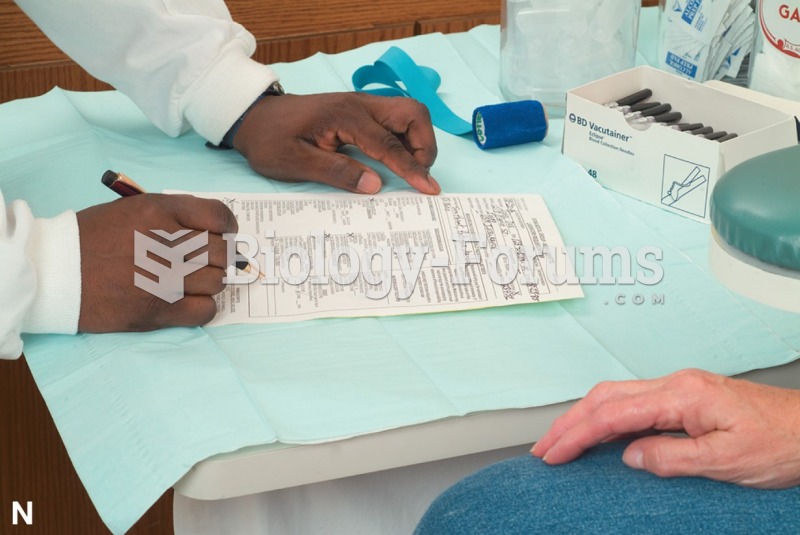|
|
|
Persons who overdose with cardiac glycosides have a better chance of overall survival if they can survive the first 24 hours after the overdose.
The effects of organophosphate poisoning are referred to by using the abbreviations “SLUD” or “SLUDGE,” It stands for: salivation, lacrimation, urination, defecation, GI upset, and emesis.
Fungal nail infections account for up to 30% of all skin infections. They affect 5% of the general population—mostly people over the age of 70.
Carbamazepine can interfere with the results of home pregnancy tests. If you are taking carbamazepine, do not try to test for pregnancy at home.
People with alcoholism are at a much greater risk of malnutrition than are other people and usually exhibit low levels of most vitamins (especially folic acid). This is because alcohol often takes the place of 50% of their daily intake of calories, with little nutritional value contained in it.
 The stages of labor and delivery. (A) During the dilation stage the cervix thins and dilates to 10 c
The stages of labor and delivery. (A) During the dilation stage the cervix thins and dilates to 10 c
 Letterhead stationery sizes are varied to suit the needs of the sender. Envelopes are sized to match ...
Letterhead stationery sizes are varied to suit the needs of the sender. Envelopes are sized to match ...





